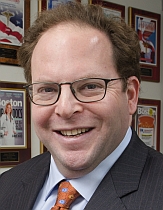
Joshua A. Hirsch
Although commonplace today, with upwards of 100,000 procedures performed each year in the US, vertebral augmentation has evolved from truly humble beginnings. In 2016 it is an integral component of minimally invasive treatment for spine disease. The AJNR contributed significantly to the early vertebral augmentation literature with a publication on the technical aspects of the procedure in 1997. Many important papers followed in ensuing years. Indeed, Lee Jensen and I were asked to put together a Special Collection of past AJNR papers related to the procedure. That effort demonstrated the remarkable accumulation of high-profile papers on vertebral augmentation in the AJNR. It also helps to underscore the unique role the AJNR has played in disseminating knowledge and sharing techniques on vertebral augmentation.
As comfort with the procedure grew and patient populations aged, neuroradiologists and others began to extend the reach of traditional thoracolumbar augmentation to the sacrum, and sacroplasty was born. From the early days of thoracolumbar augmentation, there has been near uniform agreement on fluoroscopy as the imaging guidance technique of choice. However, with sacroplasty there remains ongoing differences of opinion on image guidance— some favor fluoroscopy, while others favor CT guidance. Those who favor CT guidance suggest that the precision of needle placement and awareness of the exact relationship between the neural foramina and PMMA deposition are worth the sacrifice of real-time feedback and greater procedural time.